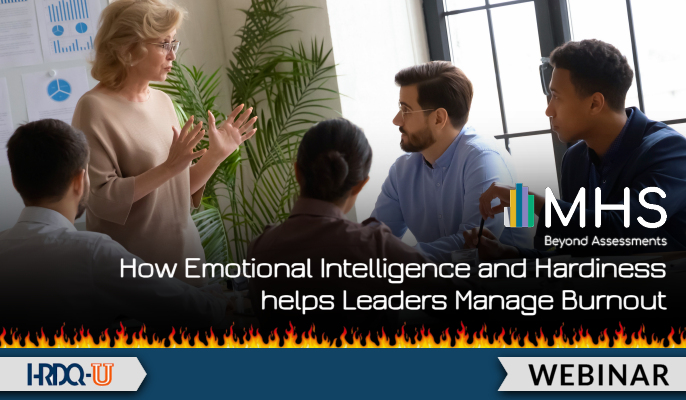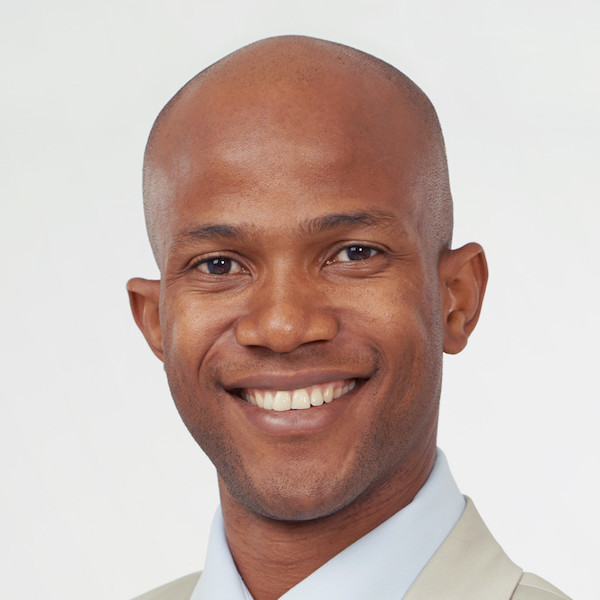- 827 Lincoln Ave. #B-10 West Chester, PA 19380
- support@hrdq.com
- +1-610-279-2002
Quick Links
Menu
Featured Topics
Menu
Total Results
We could not find what you're looking for. Please try again.No Record Found

We’ve heard a lot about worker fatigue, burnout, and the great resignation related to the COVID-19 pandemic. What does it all mean, and what can coaches and trainers do about it?
The first step is to get a clearer understanding of what is going on. In this presentation, Dr. Steven Stein will share new data on the relationship between hardiness and burnout. He’ll also look at changes in leaders’ emotional intelligence between pre-COVID and two years in.
In this presentation, you will learn how to recognize burnout, its impact on work, and how using a hardiness mindset can change the dynamics. You’ll also explore challenges and solutions for leaders dealing with burnout and gain suggestions for coaching and training based on these findings.


Dr. Steven Stein has been a key consultant in a multitude of military and government agencies within Canada and the United States. Corporate organizations such as American Express, Air Canada, professional sporting teams, and many more have also recruited Dr. Stein’s expertise.
He has provided psychological services and candidate screening in numerous reality TV shows, including Big Brother Canada, Amazing Race Canada, and more. Dr. Stein has also been heard on, seen on, and read on over 100 TV and radio shows, newspapers, and magazines throughout North America.
Beyond his professional career, Dr. Stein has been a driving force in bettering his community. He is a past president of Jewish Family and Child Toronto, a charitable foundation that supports the healthy development of individuals, children, and communities through prevention, protection, and counseling education. Dr. Stein has been a board member, chairperson, and professor at numerous universities, organizations, and psychological associations.
Connect with Dr. Stein by email and at www.mhs.com/talent.
MHS provides trusted, data-driven solutions across four core disciplines: Clinical, Education, Talent Development, and Public Safety. Science and research are the basis of MHS’s roots and future innovations. With new standards for toolsets, we help clients evaluate, track, and leverage human-centric data to help realize their full potential. We strive for fairness and equity in the development and deployment of the products we make, the solutions we provide, and the people we lead.
Learn more at MHS.com

“I thought the webinar was very informative. The information provided is very practical and useful. I will be sharing this information with my colleagues.”
Francene H.
Information and Referral Coordinator
Senior Connection Center

“Great topic – timely advice. Good research was shared.”
Carroll N.
COO
Tx:Team

“These webinars are helpful to me to better understand how to work with others, and I can accomplish it all over my lunch break.”
David W.
Office Worker
Minnesota Department of Agriculture

Sign up to be notified of upcoming live webinars, in-depth workshops, podcasts, blog posts, promotions and much more. Stay ahead of the curve and subscribe for FREE today!
2 Responses
this was an excellent webinar & thank you Dr. Stein!!
Can we get a copy of the slides or the graphs he used, they were very relevant?
We’re glad you enjoyed the event. The slides are not available for this webinar, however, you can view the recording of the event with our Human Resource Webinars membership. We also give a free 30-day trial for our webinar memberships.